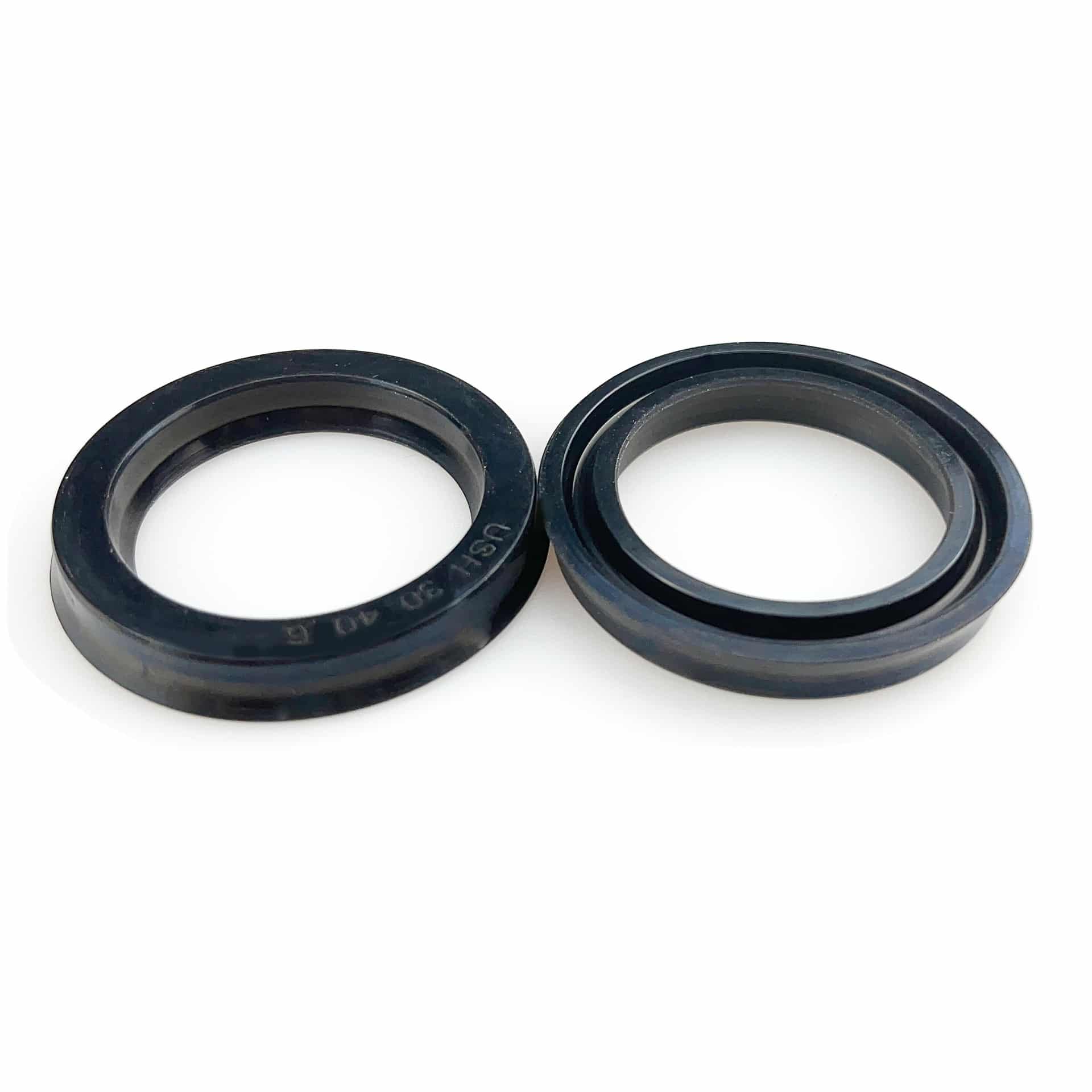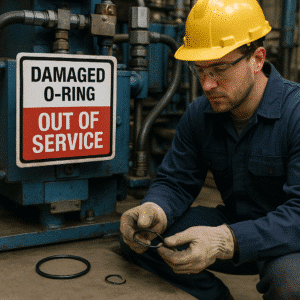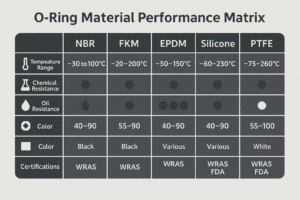I once thought individual seals were a money-saver—until I ruined a cylinder job by missing a single backup ring. That tiny mistake cost me a full day of work.
Choosing between a complete hydraulic seal kit and individual seals depends on the repair job, urgency, and accuracy of sizing. Kits ensure full coverage; singles offer flexibility and lower upfront cost.

If you're facing a repair, rebuild, or simply restocking your inventory, understanding the difference between a full kit and standalone seals can save time, money, and stress. Let’s explore both options in depth.
What’s in a hydraulic seal kit and why does it matter?
Most quality hydraulic seal kits include every key component for a full cylinder seal replacement, packaged by specific cylinder size and system use.
What components come with a typical hydraulic seal kit?
A complete hydraulic seal kit by size generally includes:
- Rod Seal (e.g., Selo da haste da ONU)
- Piston Seal (like Selo IDU/ODU)
- Limpador de pó
- Anel guia
- Backup or Buffer Seal (e.g., Selo compacto KDAS)
These are usually matched by bore and rod diameter—for instance:
| Componente do kit | Função | Material |
|---|---|---|
| Selo de haste | Stops fluid leakage | TPU, NBR |
| Selo do pistão | Maintains chamber separation | TPU, fibra de carbono |
| Limpador de pó | Blocks dirt and moisture | PU |
| Anel guia | Evita contato com metais | PTFE, POM |
| Anel de backup | Prevents extrusion damage | NBR, Nylon |
Using a full kit removes the guesswork—especially in complex or urgent jobs where downtime equals lost revenue.
When should you use a complete hydraulic seal kit?
Full kits are ideal for total rebuilds, uncertain failures, or when turnaround time is critical.
Best use cases for full kits
From experience, I recommend kits if:
- You’re rebuilding cylinders in excavators or forklifts.
- The damaged part is unclear.
- You manage a parts warehouse or custom rubber seal solution service.
- You want to avoid surprise delays or downtime.
Many OEM cylinders use non-standard groove profiles. Full kits reduce mismatched risks and ensure that selos hidráulicos are perfectly compatible.
When should you buy individual hydraulic seals?
If you’re confident in the diagnosis and dimensions, individual seals offer a cost-saving route for minor or specialized repairs.
Who benefits most from buying individual seals?
Choose singles if:
- You know the exact damaged part, like a UN seal 45x56x7.
- Only one component needs replacement, like a worn-out wiper.
- You’re upgrading materials (e.g., switching from NBR to FKM).
- You work with custom cylinders or niche machines.
One client in the food industry always bought only FDA-grade silicone wipers due to contamination risks. It cut costs and improved compliance.
Which option is more cost-effective in the long run?
Kits often win when you factor in delays, shipping costs, and unexpected part shortages.
Cost breakdown: Kits vs Singles
| Opção | Preço | Parts Included | Shipments | Risco de tempo de inatividade |
|---|---|---|---|---|
| Full Kit | $9.80 | 5–6 components | 1 | Baixo |
| Somente vedação da haste | $2.80 | 1 component | 1 | Médio |
| Haste + Pistão + Limpador | $6.80 | 3 components | 3 | Alto |
If you manage bulk repairs or have limited storage, assorted seal kits may offer the best ROI.
What do professionals prefer—kits or individual seals?
Shops and distributors prefer kits for predictability. Specialists and OEMs often order singles for custom builds.
How industry pros choose their seal solution
| Buyer Type | Preference | Razão |
|---|---|---|
| Repair Shops | Kits | Speed and full coverage |
| OEM Factories | Customized kits | Standardized across machines |
| Distribuidores | Kits + Singles | Flexibility and fast replenishment |
| Field Users | Kits first, singles after patterns | Lower initial risk, optimized over time |
We help some partners design private-label kits tailored to their local repair market—an easy way to build customer loyalty.
Conclusão
Hydraulic seal kits offer complete coverage and peace of mind. Individual seals provide flexibility for targeted fixes. Match your choice with your workload and risk tolerance.
Find the right kit or seal—no guesswork needed
Need help choosing the right hydraulic seal setup?
📧 E-mail: [email protected]
📱 WhatsApp: +86 17622979498
We’ll guide you based on your machine, usage, or just a photo of your old seal.
Related topic
How to Replace Hydraulic Cylinder Seals Like a Pro?
Quais são os tipos de vedações de cilindros hidráulicos?
How to Choose the Right Pneumatic Cylinder Seals?


